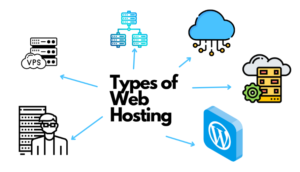
Technology will be reliant on data science in the future. Several methods are available for processing and analyzing large amounts of data. Using Python is a time-consuming activity, and that’s why Python frameworks are utilized.
Data Science uses Python frameworks to work efficiently with the reusability of the code. When choosing a library or framework, take flexibility, ecosystem support, multi-language support, hardware deployment, and ease of use into consideration.
Table of Contents
Python Frameworks
Python frameworks can be used for various operations in data science. There are plenty of frameworks based on Python that can be used to make the processes easier. Many businesses hire Python developers for their data science needs and to keep ahead of their competitors with cutting-edge technology.
Django, flask, and Bottle are some of the most used Python frameworks. If we talk about frameworks used in data science in particular, here are the top 8 Python frameworks:
1. Numpy
It is one of the most used and most popular frameworks employed in data science. It offers capabilities for working with high performance as it supports array processing. It is a general-purpose Python framework that can avoid the speed issue of a website.
It is used extensively in data analysis and it is used in creating N-dimensional arrays. It is also used as a replacement for MATLAB when it is used with other Python frameworks.
Features of the Numpy Framework
It supports an array-oriented computer for the improved overall efficiency of the code. Faster functionality is possible with an object-oriented approach. Numpy offers faster computation with vectorization.
3. SciPy
Scientific Python or SciPy is used for technical computation and provides efficient processes. This open-source framework also offers many other user-friendly features. As far as data science is concerned, it is used for statistical modeling, machine learning, and data visualization.
The linear algebra and optimization algorithm with this framework is used in data science. It is also used in solving differential equations and other mathematical operations.
Features of the SciPy framework
The SciPy framework has a collection of functions and quality commands for data manipulation. It includes functions that can easily solve complex mathematical differential equations. By using modules in this framework, multidimensional image processing is also possible.
3. Pandas
Pandas is one of the crucial Python frameworks used in data science. This Python library is used for data analysis and cleaning with NumPy. It gives flexible data structures and provides fast results on the platform. Users can also use it for structure data for Python data analysis.
It is used for extracting, transforming, and loading data. With this, users can manage data range, data shifting, and linear regression.
Features of the Pandas framework
With the rich functionalities in Pandas framework, it gives flexibility with missing and unknown data. It is also useful for creating a function and running with data including high-level abstraction. Manipulation of data is also possible with the Pandas framework.
4. Matplotlib
It is one of the most powerful and function-rich Python frameworks. There are plenty of graphs and plots with this framework that can change how you manage the data. With an object-oriented approach and quality APIs, it can embed plots into applications and help in data visualization.
Matplotlib framework performs analysis of data variables. It can visualize the majority of data and help users in getting instant in-depth analysis. It also has a scatter plot that is useful in outlier detection.
Features of the Matplotlib framework
This free and open-source framework is often used as a quality replacement for MATLAB. It consumes low memory and supports many front-end and back-end types. With improved runtime behavior in data science, it is used to increase overall efficiency.
5. Keras
This Python framework is used for neural network programs in data science. It offers great back-end support and provides quality data learning. Additionally, Keras is made to be extendable, making it simple to add new layers, models, and optimizers in data science.
Deep learning modules are used and with this, predictions can be made properly. Without the help of any additional model, it can be used to extract the data features in a model.
Features of the Keras Framework
It runs on CPU and GPU without any hassle and there are plenty of image classification models available with this. There are machine learning datasets that can be used with industry standards in this framework. It is user-friendly and contains many modules making data science smooth.
6. Dask
This Python framework is used for data analysis and machine learning. While working on high-level databases for data science operations, it has quality APIs. Furthermore, this framework is used with custom codes to increase the efficiency of data manipulation.
It is easy to integrate with other Python frameworks and libraries to bring flexibility to the operations. It also supports distributed file systems. Large datasets in Dask increase productivity and are useful for efficiently using every piece of the data.
Features of the Dask Framework
This easy-to-use framework can be installed with Python pip. Dask is efficient in parallelizing the code with a multi-process approach in data science operations.
7. Scikit-Learn
With the help of various algorithms and analysis, Scikit-Learn is one of the most used tools in data science operations. It enables the efficient carrying out of tasks like statistical modeling and data visualization, etc. It also provides support for evaluation metrics.
The data is well documented and can be used without any hassle in this Python-backend framework. Additionally, the community is also very active, which aids in resolving issues as soon as possible.
Features of the Scikit-Learn framework
This framework gives access to many algorithms with deep data learning models. It makes data normalization and preprocessing easier than ever. With quality tools to optimize business model performance, it is crucial to handle both categorical and numerical data.
8. Scrapy
A great Python library is Scrapy. This open-source Python framework is used to extract data from targeted web pages. It is fast and efficient with many features that make web scraping easier and more automatic.
It is very helpful in creating crawling programs and bots to retrieve data from the web. It is also used in gathering data from APIs and building large crawlers.
Features of the Scrapy framework
This Python-based framework has a simple interface that is fast and comes with efficiency. It is extremely flexible and can be customized to suit the specific requirements of a project. Big data scraping projects use this framework for operations.
Which Python Framework is Best for Data Science?
To these eight, there are plenty of other Python frameworks that are used in data science. There is no perfect framework but using multiple frameworks and libraries is a good option for a perfect data science development strategy.
Many mobile app developers UK are using the perfect blend of Python frameworks and making an impact. Python streamlines every process in data and coding and brings productivity and efficiency. This is the reason why Python frameworks are a preferred choice for data science technology.
Almost every data science project uses one or more of the frameworks listed here. There are many other tools in the Python ecosystem for handling advanced models and difficult calculations.






